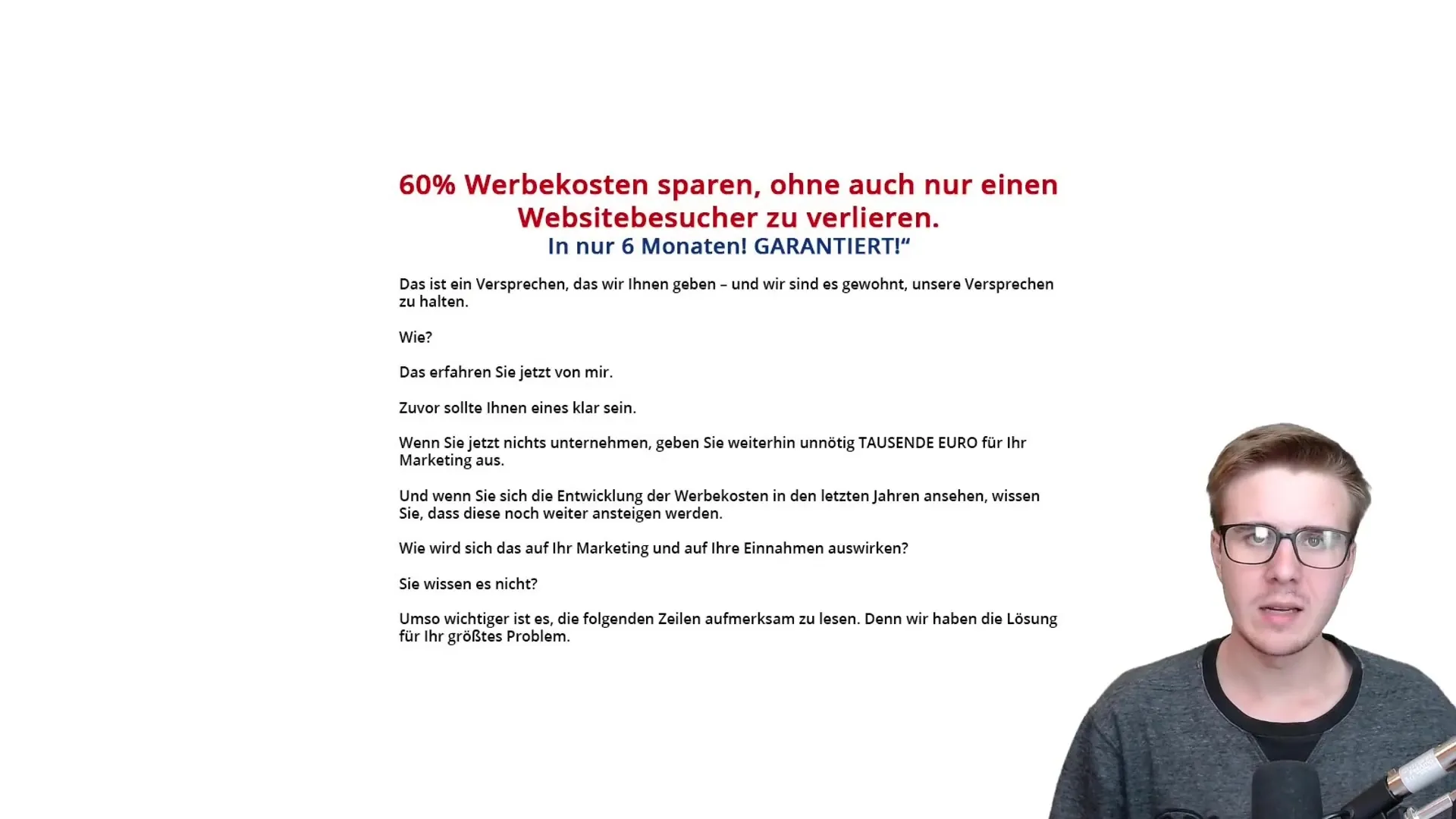Interest is the key to keeping readers or potential customers on your website. It's about establishing a connection in a few seconds and getting them to keep reading. In this tutorial, you will learn how to effectively pique interest in the introduction of your text and maintain the attention of your target audience.
Key Insights
- The reader decides within the first 10 to 11 seconds whether to stay or bounce.
- Use questions to arouse the interest of your target audience.
- Immediately highlight the customer benefit to generate attention.
Step 1: Optimize the First 11 Seconds
When you're writing a text, it's crucial to make the first few seconds count. The reader decides within 10 to 11 seconds whether to continue reading or not. To achieve this, you should start with a strong hook that clearly communicates the benefit to the reader.

In this first section, you have the opportunity to address the reader and show them that you understand their needs. By making a strong promise or asking a relevant question, you can arouse their interest and build a relationship.
Step 2: Using Questions to Spark Interest
One way to captivate your audience immediately is by using questions. These questions should focus on problems that your target audience faces. This doesn't just mean asking questions, but also phrasing them in a way that directly affects the readers.
For example, you could ask questions like: "Have you ever wondered how to reduce your advertising costs without losing users?" Such questions make it clear that you understand your readers' problems and offer solutions for them.
Step 3: Emphasizing Customer Benefits
The next step is to clearly communicate to the customer what benefit they can derive from your article. In the introduction, it's important not to lead immediately with the price or sales offer. Instead, focus on the customer benefit.
It's crucial to communicate openly and clearly what your product or service specifically offers the reader. Inform them about solutions and show them how they can benefit from your offer.
Step 4: Using Rhetorical Questions and Stylistic Devices
Use rhetorical questions to further increase interest. These questions prompt readers to think about their own problems. For example, you could ask: "How much does the rise in advertising costs affect your marketing?"
With such questions, you motivate your readers to continue reading in order to find answers to the problems that concern them.
Step 5: Maintaining Interest Beyond the Introduction
The goal of the introduction is to arouse interest and get the reader to keep reading. But to do that, you need to captivate them throughout the entire reading time. Make sure to continue offering engaging and relevant information even after the introduction.
Maintain the suspense by providing interesting data, studies, or examples that support your argument and emphasize the relevance of your topic. This way, you stay memorable to the reader.
Summary
By applying the strategies mentioned above, you will be able to effectively capture the interest of your audience and get them to keep reading. Remember, it's not just about sharing information but establishing a connection with your reader and addressing their need for solutions.
Frequently Asked Questions
What is the AIDA model?The AIDA model is a marketing and communication model that describes the four phases Attention, Interest, Desire, and Action to influence customer behavior.
How long does a reader have to decide to continue reading or not?A reader decides within the first 10 to 11 seconds whether to stay or bounce.
Why are questions an effective way to spark interest?Questions directly address the readers and relate to their own needs or problems, motivating them to keep reading.
What should I avoid in the introduction?Avoid starting immediately with the price or sales offer. Instead, focus on the customer benefit.
How can I maintain interest after the introduction?Offer engaging information, examples, and data that deepen the topic and appeal to the reader.


